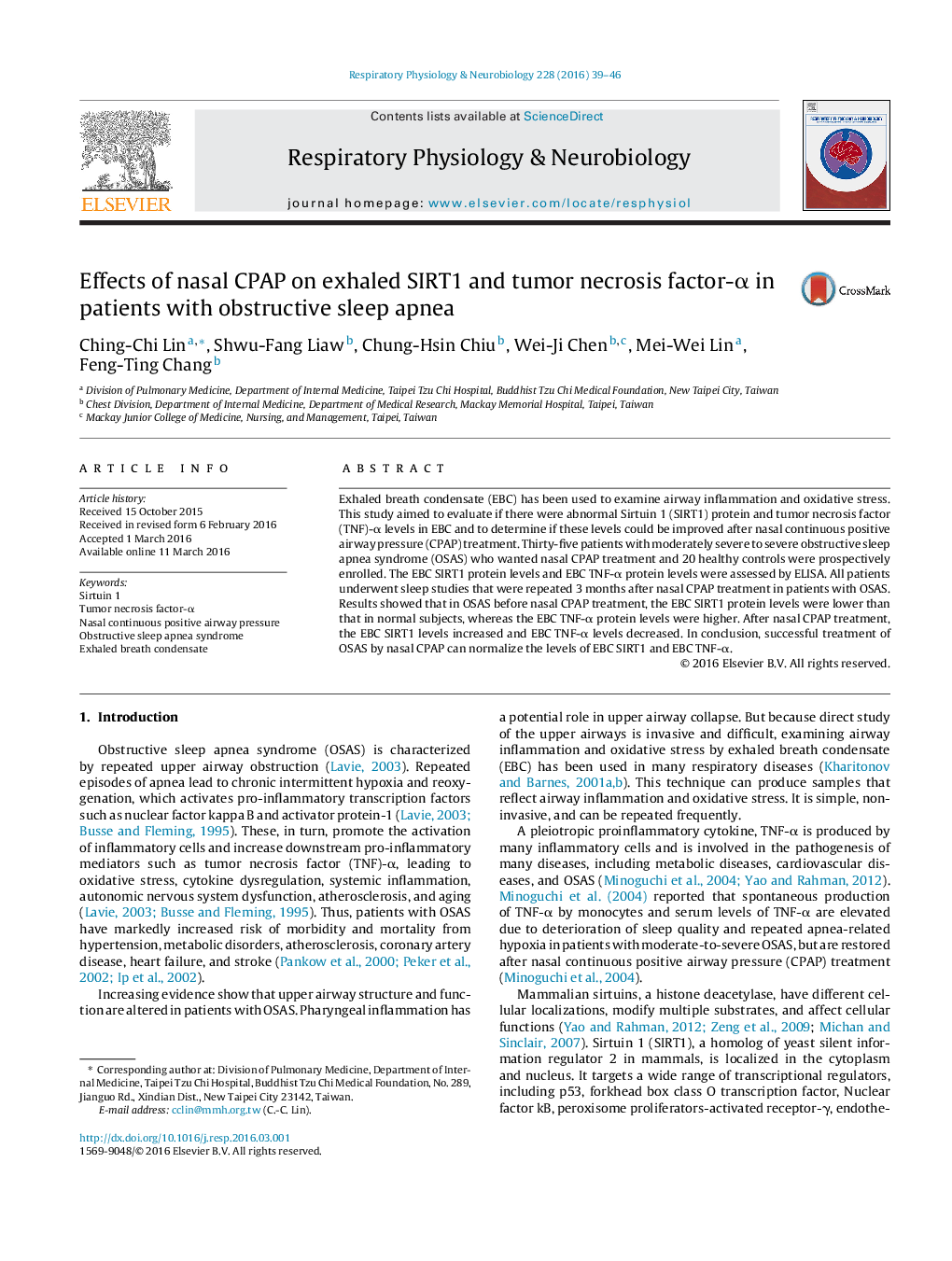| Article ID | Journal | Published Year | Pages | File Type |
|---|---|---|---|---|
| 2846739 | Respiratory Physiology & Neurobiology | 2016 | 8 Pages |
•SIRT1 targets a wide range of transcriptional regulators and regulates the intracellular signaling pathways.•Exhaled breath condensate (EBC) has been used to examine airway inflammation and oxidative stress.•In OSAS before CPAP, EBC SIRT1 protein levels were lower than in normal, whereas the TNF-α protein levels were higher.•Treatment of OSAS by CPAP can restore the EBC SIRT1 protein levels and TNF-α protein levels.
Exhaled breath condensate (EBC) has been used to examine airway inflammation and oxidative stress. This study aimed to evaluate if there were abnormal Sirtuin 1 (SIRT1) protein and tumor necrosis factor (TNF)-α levels in EBC and to determine if these levels could be improved after nasal continuous positive airway pressure (CPAP) treatment. Thirty-five patients with moderately severe to severe obstructive sleep apnea syndrome (OSAS) who wanted nasal CPAP treatment and 20 healthy controls were prospectively enrolled. The EBC SIRT1 protein levels and EBC TNF-α protein levels were assessed by ELISA. All patients underwent sleep studies that were repeated 3 months after nasal CPAP treatment in patients with OSAS. Results showed that in OSAS before nasal CPAP treatment, the EBC SIRT1 protein levels were lower than that in normal subjects, whereas the EBC TNF-α protein levels were higher. After nasal CPAP treatment, the EBC SIRT1 levels increased and EBC TNF-α levels decreased. In conclusion, successful treatment of OSAS by nasal CPAP can normalize the levels of EBC SIRT1 and EBC TNF-α.
